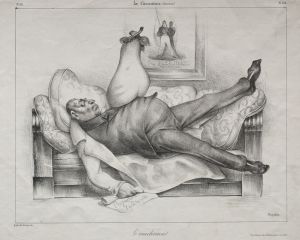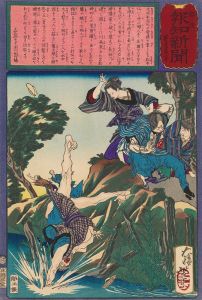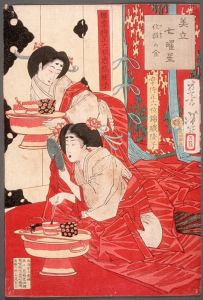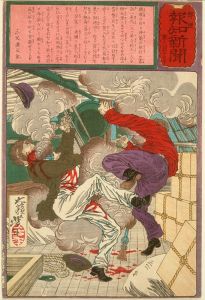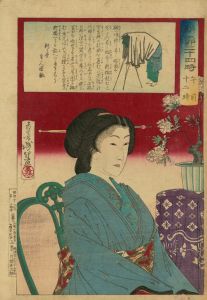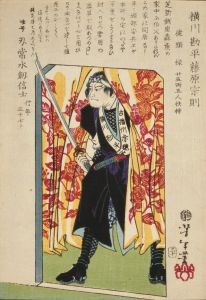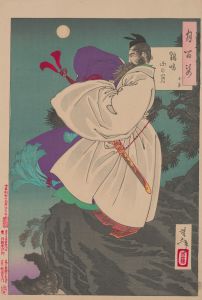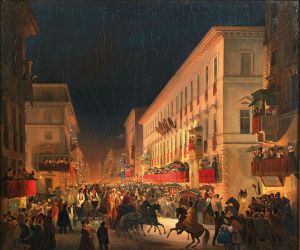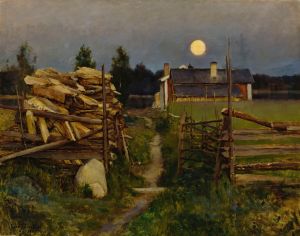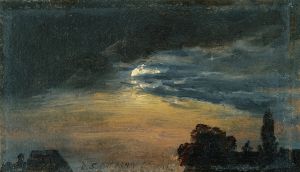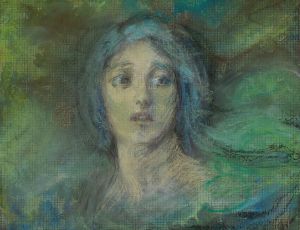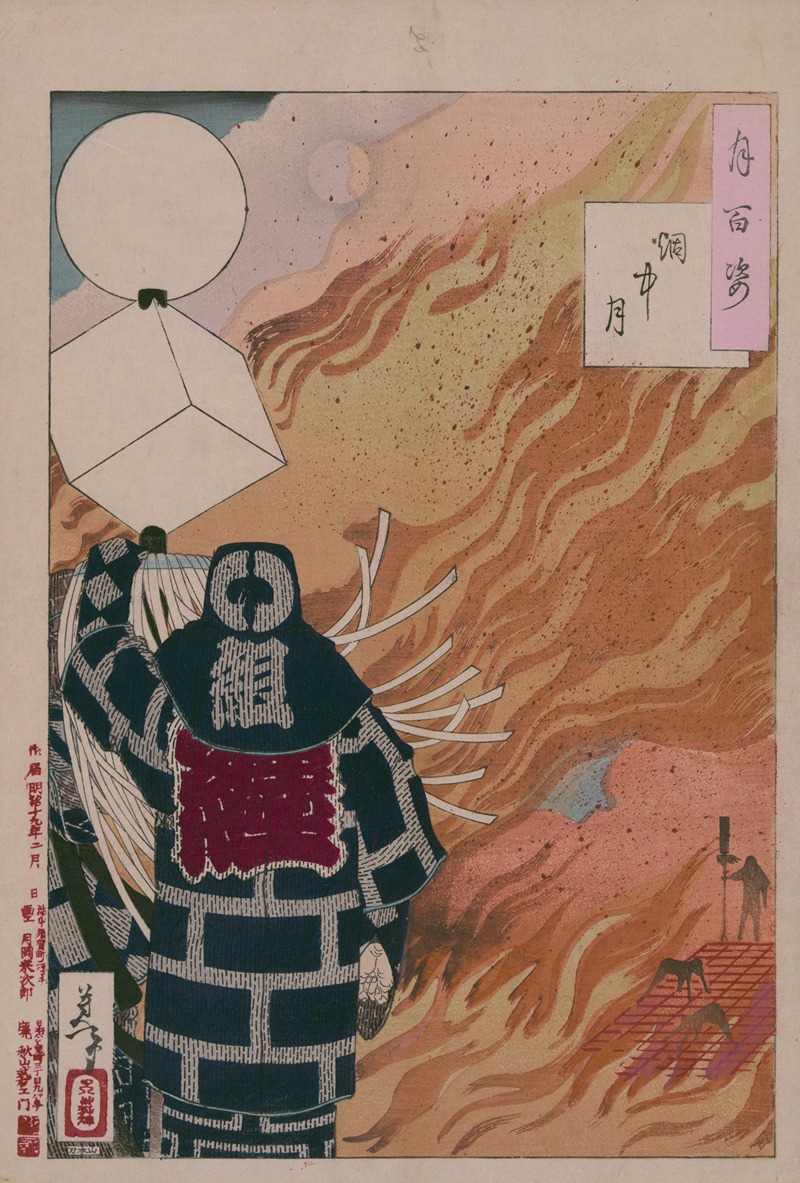
Enchū no tsuki
A hand-painted replica of Tsukioka Yoshitoshi’s masterpiece Enchū no tsuki, meticulously crafted by professional artists to capture the true essence of the original. Each piece is created with museum-quality canvas and rare mineral pigments, carefully painted by experienced artists with delicate brushstrokes and rich, layered colors to perfectly recreate the texture of the original artwork. Unlike machine-printed reproductions, this hand-painted version brings the painting to life, infused with the artist’s emotions and skill in every stroke. Whether for personal collection or home decoration, it instantly elevates the artistic atmosphere of any space.
Tsukioka Yoshitoshi was a renowned Japanese artist known for his work in the ukiyo-e genre, a style of woodblock prints and paintings that flourished in Japan from the 17th through 19th centuries. One of his notable works is "Enchū no tsuki," which translates to "Moon Through the Round Window." This piece is part of Yoshitoshi's acclaimed series "One Hundred Aspects of the Moon" (Tsuki hyakushi), which was published between 1885 and 1892. The series is celebrated for its innovative compositions and its exploration of traditional Japanese themes through the motif of the moon.
"Enchū no tsuki" exemplifies Yoshitoshi's mature style, characterized by a blend of traditional ukiyo-e techniques and a more modern, expressive approach. This particular print captures a serene and contemplative scene, featuring a figure gazing at the moon through a round window. The composition is notable for its use of negative space and the subtle gradations of color that evoke a sense of tranquility and introspection. Yoshitoshi's ability to convey emotion and atmosphere through his use of line and color is evident in this work, making it a standout piece in the series.
The "One Hundred Aspects of the Moon" series is significant not only for its artistic merit but also for its cultural and historical context. During the late 19th century, Japan was undergoing rapid modernization and Westernization, and traditional art forms like ukiyo-e were in decline. Yoshitoshi's work during this period is often seen as a bridge between the classical ukiyo-e tradition and the emerging modern art movements. His focus on the moon as a central theme allowed him to explore a wide range of subjects, from historical and literary figures to scenes from everyday life, all unified by the presence of the moon.
Yoshitoshi's "Enchū no tsuki" and the entire "One Hundred Aspects of the Moon" series reflect his deep appreciation for Japanese history and culture, as well as his innovative spirit. The series was well-received at the time of its publication and has continued to be admired by art historians and collectors for its technical excellence and emotional depth. Yoshitoshi's work has had a lasting impact on the world of Japanese art, influencing subsequent generations of artists and contributing to the global appreciation of ukiyo-e.
In summary, "Enchū no tsuki" is a quintessential example of Tsukioka Yoshitoshi's artistry and his ability to capture the beauty and mystery of the moon through the medium of ukiyo-e. The piece stands as a testament to his skill and creativity, as well as his dedication to preserving and revitalizing traditional Japanese art during a time of significant cultural change.






